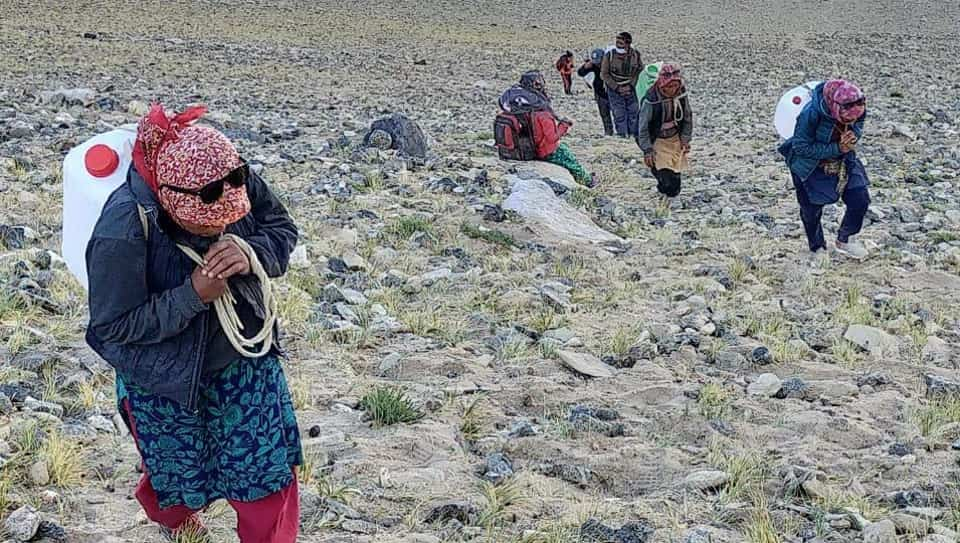
SOURCE: HT
Amid the continuing standoff with China in eastern Ladakh, pictures of locals from Chushul and Merak villages supplying water and other necessities to the Indian Army have emerged on social media and have been widely shared.
In a Facebook post, Konchok Stanzin executive councillor for education at Ladakh Autonomous Hill Development Council at Leh, called these volunteers soldiers without uniform.
“Soldiers without Uniform: Volunteers from #Chushul & #Merak are in service to the nation, supplying local products, essential commodities and water to #IndianArmy deployed at #Border,” he wrote.
He went on to say that the locals have always stood with the Indian Army whenever required and monks, women, youth, and ex-servicemen are doing voluntary service. “I would say these people/ border people are the soldiers without uniform. Hats off to all the volunteers, we are proud to all of you,” Stanzin said.
Tsering Stobdan, another local from Leh posted, “Volunteers of Chushul village carrying water and essential commodities to Indian Army at Black top. Salute to them. Jai Hind”.
Spalchan, a local from Leh said that volunteers have been supplying water and other essential commodities to the Indian Army soldiers at Black Top.
“Around 60 locals, including women from Chushul and Merak villages took the initiative to deliver water and other essential commodities on the heights of Black Top. They started around five days ago,” he said.
“Earlier, the Army used to hire locals as porters, for which they were paid but in the wake of Indo-China stand-off locals volunteered themselves. They are ferried in army trucks to the nearest points from where they undertake an arduous trek to deliver the supplies at the heights of the Black Top,” he added.
South of Pangong Tso lies India’s Chushul sector which has Chushul village, Spanggur Lake and Black Top and Helmet Top. Around 170 families live in Chushul village.
Even before the Galwan Valley clash took place on June 15 when India lost 20 soldiers, Nyoma block development council (BDC) chairperson Urgain Chodon had flagged rising Chinese activity along the Line of Actual Control (LAC) in the strategic region.
On April 27, Chodon had first raised the issue of heightened Chinese activity in Demchok area on her Facebook page, but had withdrawn the post moments later.
However, in a series of posts and pictures on June 11, the BDC chief once again exposed Chinese intrusions.
In another post with pictures, she said her maternal uncle Rigzin lost his ancestral shed at Laegoknonboo because PLA pushed him 50 steps back. “So imagine how many square km we lost.”






